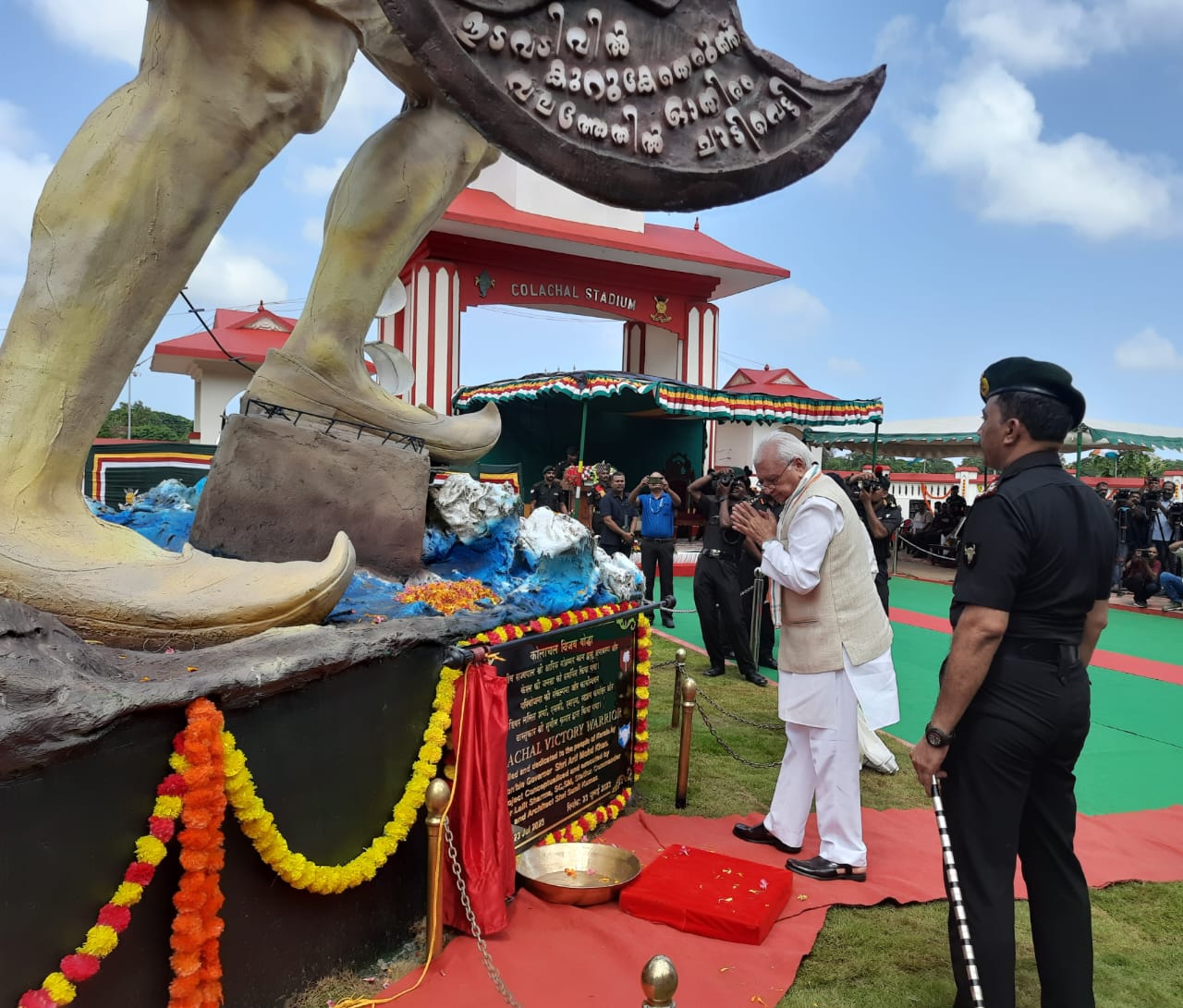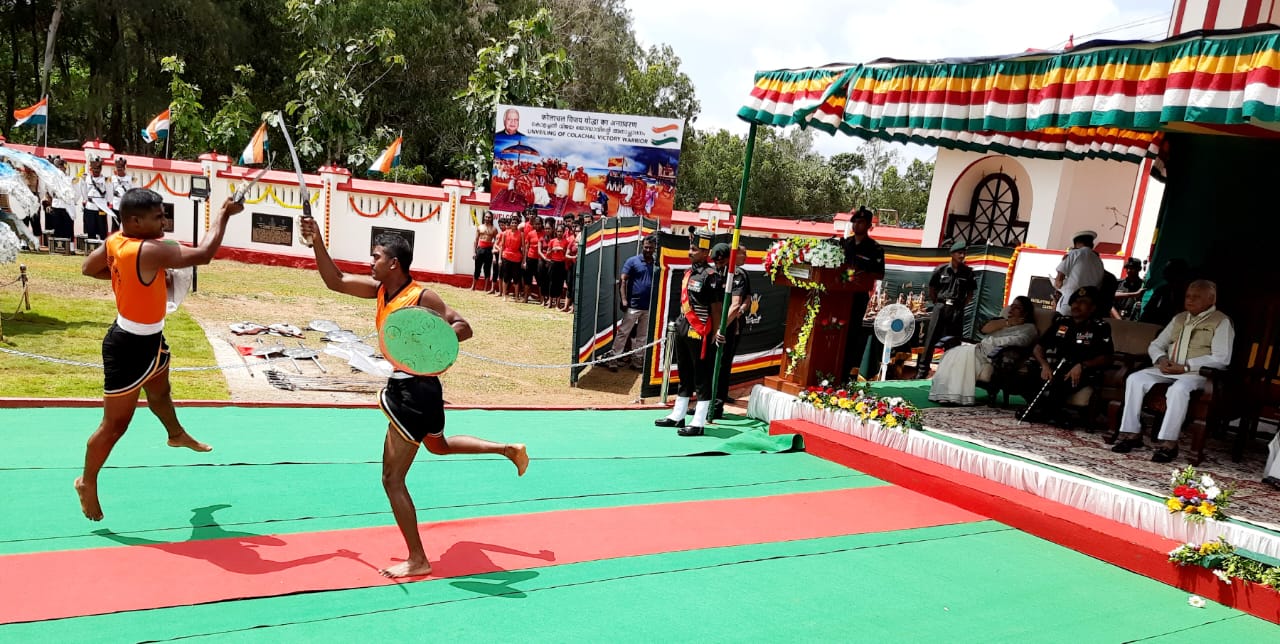Thiruvananthapuram: In a ceremony held to commemorate the battle of Colachel and celebrate its victorious spirit, the Hon’ble Governor of Kerala, Shri Arif Mohammed Khan, unveiled the `Colachel Victory Warrior Statue’ at the Colachel War Memorial located in Pangode Military Station. The event was attended by the Station Commander of Pangode Military Station, several dignitaries, and Ex-servicemen. During his address to the gathering, the Hon’ble Governor praised the Pangode Military Station for erecting such a magnificent statue, which stands as a symbol of all the unsung heroes of the Colachal War and serves as a tribute to those who fought valiantly for their motherland.

The occasion was also marked by a spectacular display of martial arts – Kalaripayattu by Madras Regiment and students from martial art schools.


Why Colachal War is marked important in history?
In the early 18th century, the Dutch enjoyed a hold over economic and political resources in Kerala and controlled most of its pepper and cinnamon trade. Marthanda Varma, the 24 year old King of Travancore, on the other hand, had just crushed the rising power of the nobles and was looking to expand his Kingdom to the whole of Malabar region.
The siege of Colachel was brought into action on 26 November 1740 by continuous bombardment by the Dutch naval forces. In a series of events, the Dutch imposed a complete blockade over the Travancore coast around Colachel and plundered villages in and around Colachel. Taking advantage of the shortage of Dutch troops, Marthanda Varma’s army marched towards Colachel and caught the Dutch off guard. Supplies to Dutch garrisons were cut off and a blockade imposed on the landside. Initially, the Dutch had planned to make a quick dash and capture Padmanabhapuram, the capital of Travancore. They had probably underestimated the will of the Travancore army to defend their territory.
The Dutch army consisted of about 400 men, while there were nearly 12,000 soldiers from Travancore. A cannonball fired by the Travancore army bombarded the makeshift tents of Dutch which housed grain and ammunition supplies, thus decisively ending the battle in their favour. Dutch Commander De Lannoy was captured and imprisoned.
Travancore army completely exterminated the superior and better equipped Dutch forces. It was the first time that an Asian power had successfully defeated the Europeans. A ‘Victory Pillar’ was later erected at the spot of the battle commemorating this victorious feat.














Comments